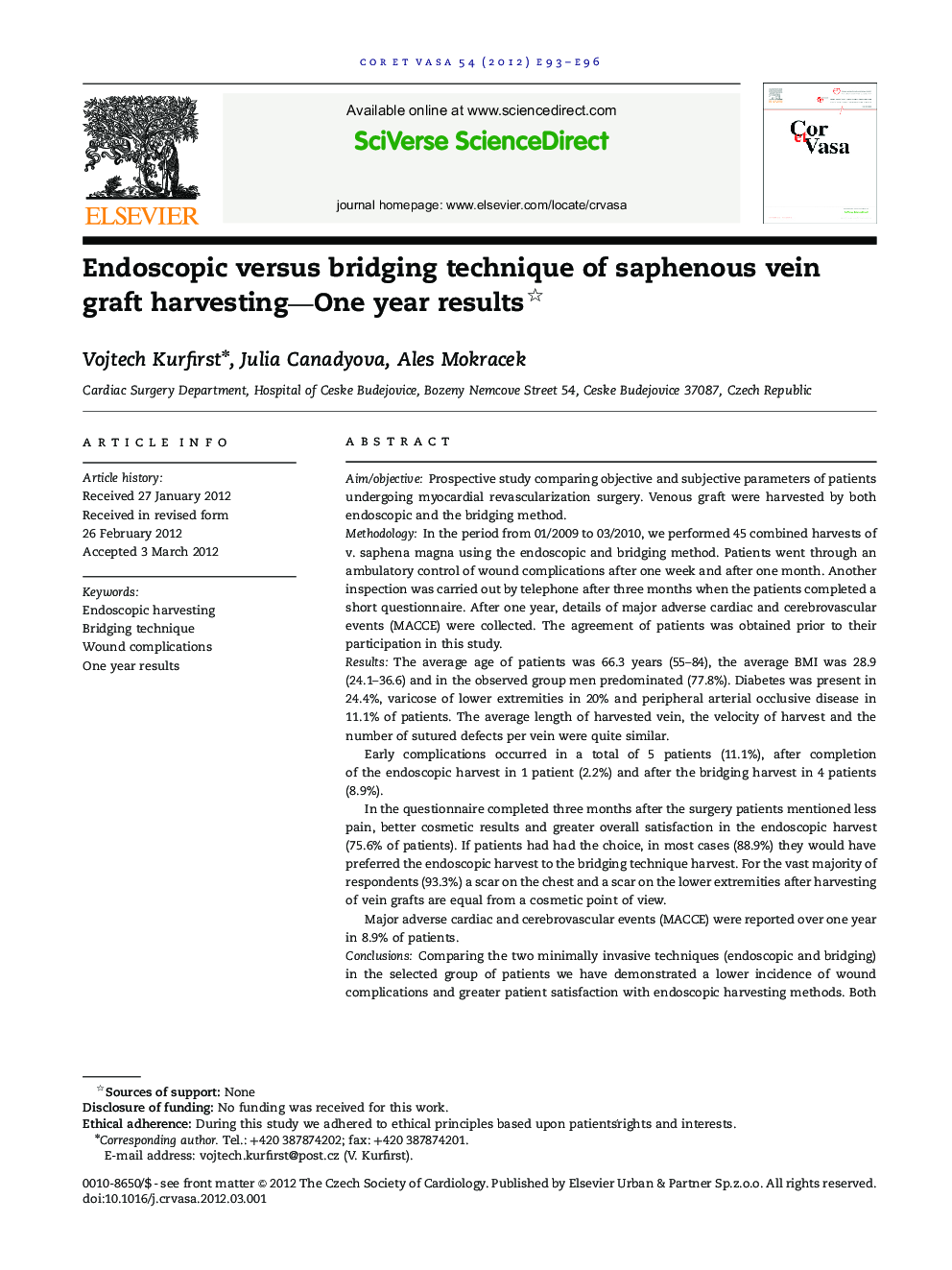| Article ID | Journal | Published Year | Pages | File Type |
|---|---|---|---|---|
| 2722435 | Cor et Vasa | 2012 | 4 Pages |
Aim/objectiveProspective study comparing objective and subjective parameters of patients undergoing myocardial revascularization surgery. Venous graft were harvested by both endoscopic and the bridging method.MethodologyIn the period from 01/2009 to 03/2010, we performed 45 combined harvests of v. saphena magna using the endoscopic and bridging method. Patients went through an ambulatory control of wound complications after one week and after one month. Another inspection was carried out by telephone after three months when the patients completed a short questionnaire. After one year, details of major adverse cardiac and cerebrovascular events (MACCE) were collected. The agreement of patients was obtained prior to their participation in this study.ResultsThe average age of patients was 66.3 years (55–84), the average BMI was 28.9 (24.1–36.6) and in the observed group men predominated (77.8%). Diabetes was present in 24.4%, varicose of lower extremities in 20% and peripheral arterial occlusive disease in 11.1% of patients. The average length of harvested vein, the velocity of harvest and the number of sutured defects per vein were quite similar.Early complications occurred in a total of 5 patients (11.1%), after completion of the endoscopic harvest in 1 patient (2.2%) and after the bridging harvest in 4 patients (8.9%).In the questionnaire completed three months after the surgery patients mentioned less pain, better cosmetic results and greater overall satisfaction in the endoscopic harvest (75.6% of patients). If patients had had the choice, in most cases (88.9%) they would have preferred the endoscopic harvest to the bridging technique harvest. For the vast majority of respondents (93.3%) a scar on the chest and a scar on the lower extremities after harvesting of vein grafts are equal from a cosmetic point of view.Major adverse cardiac and cerebrovascular events (MACCE) were reported over one year in 8.9% of patients.ConclusionsComparing the two minimally invasive techniques (endoscopic and bridging) in the selected group of patients we have demonstrated a lower incidence of wound complications and greater patient satisfaction with endoscopic harvesting methods. Both of these minimally invasive methods are safe for the patients, which were demonstrated by low occurrence of MACCE.
